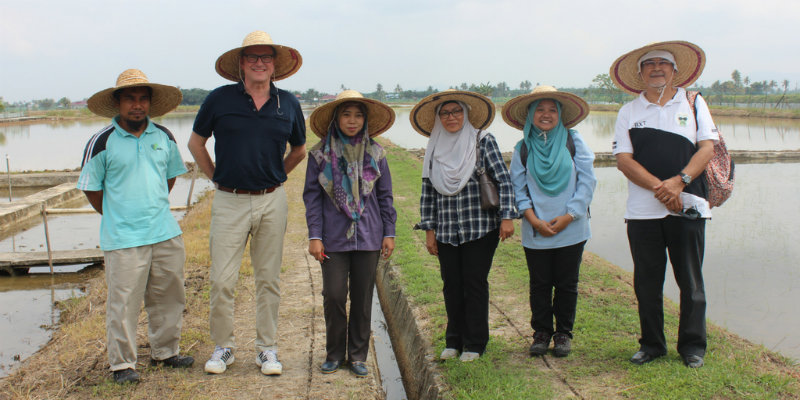Nature vs Nature : For the Greater Good of Agriculture

Afterschool Team
July 11, 2017
Although the natural world exists in symbiosis, with each of its elements living in mutually beneficial relationships, nature can also be used to combat each other in many instances.
This natural warfare can prove very advantageous to the human world, especially when it is applied to the industrious activities of man. This is because using nature to fight nature is environmentally friendly and could pave the way for a man’s benefits and intentions in his work, especially with regards to agriculture and farming.
This is exactly what Professor Dr Suzana Yusup of Universiti Teknologi PETRONAS (UTP) has taken advantage of in her development of a biopesticide. It all started with a UTP CSR programme and to support the research grant provided towards assisting the surrounding community of farmers who were facing challenging problems such as lower yields and pests.
Currently using chemical based pesticides, the research was predominantly to determine if biopesticides would improve yields while deterring the pests and bugs. In order to do this, a biopesticide had to be formulated. So, concocting a special, confidential neem-based formula and other natural extracts from plants, Suzana and her research team with the support from the Department of Agriculture have indeed successfully proven that biopesticide is definitely an improvement over the currently available chemical version.
This is because not only does it improve yields, it is also a much safer option without any negative chemical effects on the users as well as the paddy plants and the environment as a whole. This then will become the first biopesticide available for paddy and it is expected to have a significant impact on the paddy growing industry. “We are working alongside an international bio-based pesticide company with the support of the Department of Agriculture to improve the formula and make it into a “one-solve-all” biopesticide,” said Suzana.
The synthesised material, which is an activating agent, produced by Suzana and her team can also be alternatively used together with the company's existing products. Meanwhile, lab tests have shown that the formula currently is able to reduce pest thus potentially double the yields of the paddy, notwithstanding the other variables that affect each harvest such as the weather and other uncontrollable factors.
Developed specifically for paddy, she added that it has not been tested on other crops as yet, although technically and practically speaking it should also work with other plants. This is an exciting product in the making because the potential benefits for the paddy, and possibly other crops as well, is manyfold in that it enhances growth, improves yields and keeps bugs and pests away. “We are now ready to test it in a greenhouse environment and this will further add to the evidence of its efficacy and benefits,” Suzana revealed.
She added that UTP has already applied for a patent on the biopesticide formula and is now in discussions with a company to take it to the next level. “The formula will eventually be licensed to a company because we need a lot of other endorsements and have to meet numerous agency requirements before taking it further into the production and commercialisation process.”
An esteemed lecturer in UTP’s chemical engineering department, Suzana has been working on this biopesticide since 2015 as the lead researcher. She also heads a research cluster under UTP Centre for Biofuel and Biochemical Research. Her project was put forth as a participant in the Elsevier Foundation Green and Sustainable Chemistry Challenge last year where it emerged second out 500 proposals.
With an award of £25,000 that complemented UTP’s initial grant, the research delved deeper and the result is a formula that is now reaching towards the production stage. As one of the challenge winners, Suzana was called back to present the findings of her research at an international conference organised by the Elsevier Foundation last May.
She was also recognised as a Top Research Scientist Malaysia (TRSM) by the Academy of Sciences Malaysia this year. She was the second UTP lecturer to be inducted into the TRSM hall of fame. A highly respected scientist in her field of biofuel and biomass utilisation and material development, she is passionate about discovering how biomass waste can be used to create energy while also looking into other environmentally friendly applications in her field. “Change must always be for the better and this is what research is all about,” she said.
Would you like to know more about UTP ?







